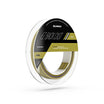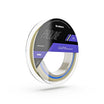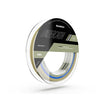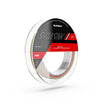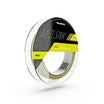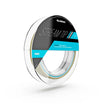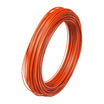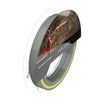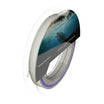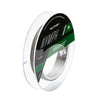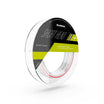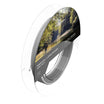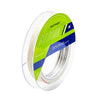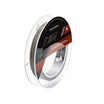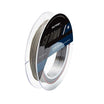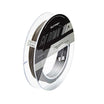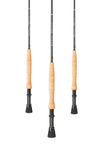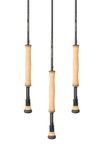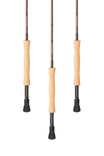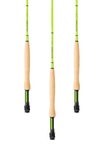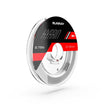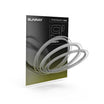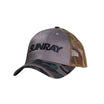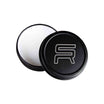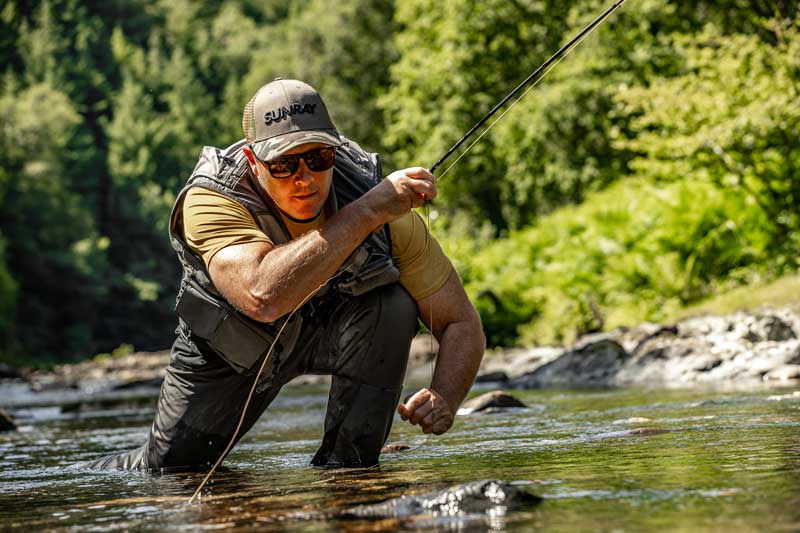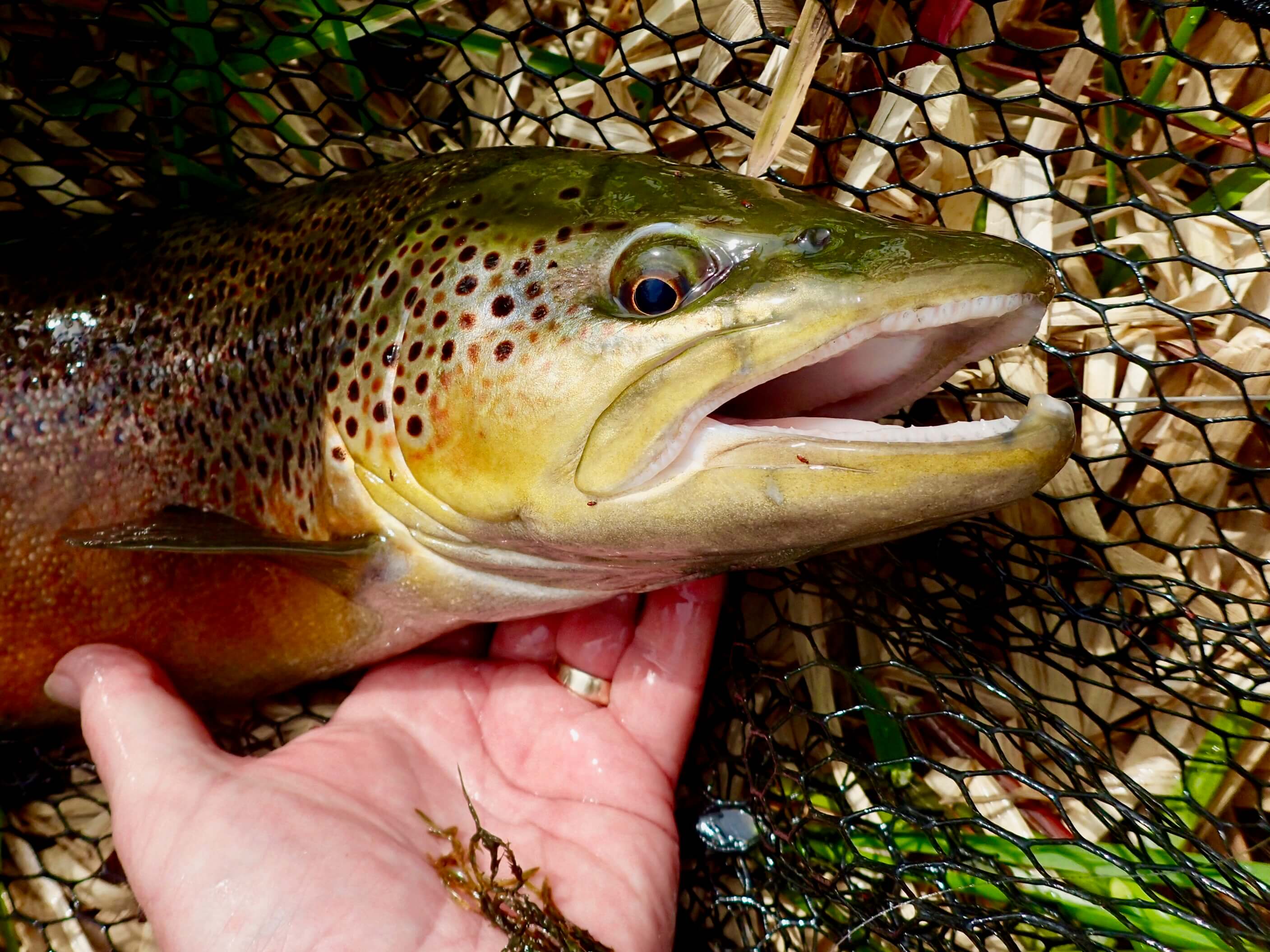by Dave Southall
Light line fly fishing - it's no longer niche.
Finesse, or light line fly fishing is fast becoming the go to technique for anglers targeting wary Trout, Grayling, and Char.
At the recent BFFI Fly Fair in Stafford, I had the chance to demonstrate not only fly tying with hooks down to size 30, but also various casting styles, using ultra-light fly lines.
Unsurprisingly, the most common question I heard all weekend was:
Where can I find quality light fly lines, like #1 and #0, and reliable micro hooks in the UK?
The key to success is firstly choosing the right rod, then matching it with the right micro thin fly line. Fortunately, there are an increasing amount of light line fly rods available in the UK.
The best finesse fly fishing rods
The standout is the ultimate super light Sunray Microlite GT 10’ 6”, #0 an exceptional, delicate presentation fly rod.
Here are some other excellent rods I use in the Sunray range, that cope very well with casting light lines and protecting fine tippets.
Sunray Microlite GT 10’ #4 rod:
When the fish run big, I pair it with a #1 Sunray Proline Max , and 15’ to 20’ leader, or a Medium/Long Range Micro Thin Dry Fly line with a shorter leader of about 12’ to 14’.
Sunray California Glass rod :
On overgrown brooks I use a Sunray 8’ 1 weight or 6’ 4” 2-weight California Glass rod, teamed up with a #1 Short/Medium Range Dry Fly line with a leader of 10’ to 14’.
Sunray Microlite GT 10' #2 rod :
I regularly use the 10’ #2 Microlite GT, teamed up with a Sunray Proline Max #1, #0 or Euro Nymph line & leaders ranging from 12’ to 20’
These rods are not the hyper-stiff, super-fast action rods that were so popular a few years back. They have a smooth, progressive action, bending right down to the butt when playing big fish, and are capable of casting a wide range of line weights at both close and relatively long range. They are ‘fishing rods’, not just ‘casting rods’.

An 8lb 5oz trout caught using a 10’ 4-weight Microlite GT rod, with a 1 weight Proline Max, 20’ leader & size 18 Pheasant Tail Nymph.
Dry Fly Fishing and Nymphing
Thanks to Sunray's innovative approach to fly fishing tackle, we have #0 & #1 lines available for both short/medium range and medium/long range fishing, with dry flies and nymphs. These lines can be used for several styles of nymphing, although for Euro-nymphing the Sunray Euro Nymph line is the best choice.
These micro-thin lines are thinner than more conventional lines, so cut through the air more easily (similar to silk lines). They also have virtually no ‘coil memory’ after being stored on the reel for a while, so need little or no stretching to straighten them before a day’s fishing.
Choosing hooks for tying micro-flies
When I’m choosing hooks for tying micro-flies I want hooks that have a wide gape, short shank, decent sized eye, with sufficient strength to land big fish. And of course barbless, wherever possible. Here are some favourites:-
Tiemco 2488 (size 20 to 24) & 2488H (size 20 & 22) (heavy wire), are suitable for tiny dry flies, such as CdC IOBO Humpies, Midge Pupae/Buzzers & Micro-nymphs. I have had to get mine from Bogdan Gawlick in Poland.
Ahrex FW527 (size 20 to 24), are suitable for tiny dry flies such as CdC IOBO Humpies, Midge Emergers & Micro-Klinkhammers, available from Mallon & Green in Bakewell, Derbyshire.
Daiichi 1110 (size 20 to 26), are suitable for small dry flies & nymphs, but a bit fine in the wire for big fish & the gape is quite narrow. I rarely use them nowadays. They are also available as Orvis Big Eye Dry Fly hooks.
Daiichi 1120 (heavy wire, size 20 & 22), Daiichi 1130 (medium wire, size 20 to 24) Grub hooks, are suitable for Small CdC dry flies including Shuttlecocks & small Buzzer Pupae, available from Fly Tying Boutique in Yorkshire.
Gamakatsu C12 BM (size 26 to 30), are suitable for really small dry flies & Midge Pupae/Buzzers. These are expensive but very strong, with big eyes, available from the USA & possibly from Deer Creek in Wales.
Fasna 415 Jig hook, (size 20), my favourite small, wide gape jig hook for small nymphs & grayling bugs, available in the UK from several suppliers.
Hanak H 150 BL short shank, wide gape (size 24 & 26, (more like sizes 20 & 22), are good strong hooks for small dry flies & nymphs. I got mine from Greg’s Fly Shop in Belgium.
Details of some hooks suitable for small flies are given in the table below.
The hook length includes the eye, and shank length is the straight part of the shank minus the eye. The gape is the distance between the shank and the hook point.
|
HOOK MODEL |
HOOK SIZE |
HOOK LENGTH mm |
SHANK LENGTH mm |
GAPE mm |
|
Tiemco 2488 |
18 |
7 |
4 |
3 |
|
Short shank |
20 |
6 |
3.5 |
2.75 |
|
Wide gape |
22 |
5 |
3 |
2.5 |
|
Curved |
24 |
4.5 |
2.25 |
2.25 |
|
|
26 |
4 |
2 |
2 |
|
|
|
|
|
|
|
Ahrex FW 527 |
18 |
6.94 |
4 |
4.10 |
|
Short shank |
20 |
5.55 |
3 |
3.20 |
|
Super Wide gape |
22 |
5.20 |
2.5 |
2.60 |
|
Barbless |
24 |
4.80 |
2.25 |
2.10 |
|
|
|
|
|
|
|
Daiichi 1110 |
20 |
7 |
5 |
2.5 |
|
Straight shank |
22 |
6.5 |
4 |
2.25 |
|
Standard gape |
24 |
5.5 |
3.25 |
2.0 |
|
Big Eye |
26 |
4.5 |
3 |
1.75 |
|
|
|
|
|
|
|
Daiichi 1120 |
18 |
7 |
Curved shank |
3 |
|
Grub hook |
20 |
6 |
|
2.75 |
|
Heavy wire |
22 |
5 |
|
2.5 |
|
|
|
|
|
|
|
Daiichi 1130 |
18 |
7 |
Curved shank |
3 |
|
Grub hook |
20 |
6 |
|
2.75 |
|
Standard wire |
22 |
5 |
|
2.5 |
|
|
24 |
4.5 |
|
2.25 |
|
|
|
|
|
|
|
Gamakatsu C12 BM |
26 |
4 |
Curved shank |
2.25 |
|
Big eye, wide gape |
28 |
3.5 |
|
2 |
|
Barbless |
30 |
3 |
|
1.75 |
|
|
|
|
|
|
|
Fasna 415 Jig |
20 |
7 |
3.75 |
3 |
|
|
|
|
|
|
|
Hanak H 150 BL |
18 |
9 |
5 |
4.25 |
|
Wide gape |
20 |
8 |
4.5 |
3.5 |
|
Short shank |
22 |
7 |
4 |
3 |
|
Barbless |
24 |
6.5 |
3.5 |
2.75 |
|
Strong wire |
26 |
6 |
3.25 |
2.5 |

A size 24 Midge Emerger tied on an Ahrex FW527 hook & a size 24 CdC IOBO Humpy tied on a Daiichi 1130 hook

A size 30 Wire Buzzer Pupa tied on a Gamakatsu C12BM hook & the real thing removed gently from a trout throat.
Why use Ultra-light fly lines?
So, why do I bother fishing with light-line rods, micro thin fly lines, long leaders and tiny flies? Surely a 9’ #5 rod & line is the standard setup for rivers and a #7 setup for lakes.
Here's why:
- Light lines cause less fish-spooking when they land, and when lifting the line off the water when recasting.
- Long leaders stop the thicker line landing near the fish, so further reducing the risk of spooking.
- Light, soft action rods give more protection to light tippets when playing big fish.
- Fishing ‘light’ is less tiring than fishing with standard gear.
There are times when Trout, Grayling & Char are feeding on midges, aphids & tiny nymphs, in preference to big mayflies, hawthorn flies and minnows. I have experienced days when even a size 24 CdC IOBO Humpy has been rejected by Grayling and Trout but a size 30 has been avidly ingested.
Is light line suitable for big fish?
Some folks say, fishing with light setups is good for small fish but not suitable when big fish are expected. However, switching to a light line set up does not always mean fishing with light/fine/low breaking strain tippets.
I have caught big fish with size 24 flies, and tippet as thick as 4x/0.16mm diameter/6lb breaking strain, and size 20 flies on 3x/0.18mm/7.9lb tippets.
When using thick/stiff tippets and small flies, I tie them into a Rapala Loop Knot to give the fly more freedom to move naturally, rather than tying it rigidly to the tippet with a 4 turn half blood knot (my usual chosen knot).
Try Finesse Fly Fishing
So, if you haven’t tried Finesse Fly Fishing, whether your casting buzzers to sipping Grayling, or stalking Trout in a clear brook, give light setups and small flies a go.
You’ll be surprised how many more fish you catch!


